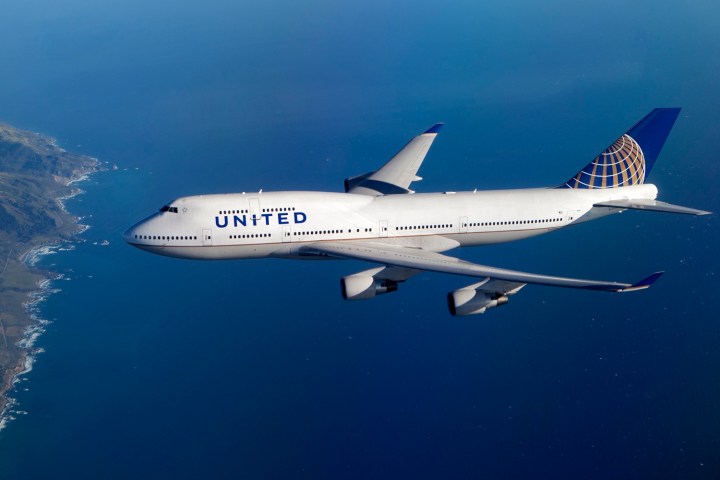
Aviation enthusiasts have been lamenting the dwindling numbers of the 747s flying, and rightly so — hence why United had created much fanfare leading up to the final flight (the actual revenue-based flight ended on October 29, but a special celebratory 747 was still flying afterward). The 747 isn’t only unique in looks, but it’s special for introducing a number of aviation firsts; airports have been redesigned to accommodate it; and it helped open the door to intercontinental travel for more travelers. It’s the presidential aircraft for world leaders, and the ride the Space Shuttle piggybacked on. It’s even helped fight deadly wildfires. Here’s a look at why this particular plane is so well loved, and what the future brings.
The original jumbo jet

Since its first flight in 1969 until the introduction of the Airbus A380 in 2005, the 747 held the record for the highest-capacity passenger plane (374 to 490, depending on the model and configuration). The 747 is also the world’s first wide-body aircraft, capable of accommodating two aisles. Although it’s no longer the world’s largest, the newest version (747-8) still holds the record for world’s longest passenger plane. For much of its heyday, the 747 had the capacity, speed, range, and technology that were unmatched.
Double-decker luxury

Its presence at airports is instantly recognizable, even if you aren’t a plane enthusiast. That’s thanks to its partial double-deck design, which provides the trademark hump — an exclusive cabin that has been used as a flying lounge, but is now reserved for premium passengers. Until the Airbus A380, the 747 was the only modern plane with a double-deck layout.
It’s made in the world’s largest building

To accommodate its assembly, Boeing built a facility with the world’s largest usable volume at its factory in Everett, Washington. Around 50,000 people helped bring the first 747s into the world. The building is still used today.
It was born from the military

The 747 was developed after Boeing lost a government contract to build a large military transport plane. Although it uses the same engine technology, it was completely redesigned for passengers. The 747 was also developed to meet increasing demand in civilian air travel. Today, the U.S. military uses modified 747s for other purposes, such as missile defense.
It’s arguably the most famous plane

The U.S. president flies on a modified 747 that’s often referred to as Air Force One. But it’s also the VIP transport for other world leaders, such as the prime minister of Japan. NASA uses a 747 for research purposes, and used it as a transporter for the Space Shuttle. Even if you’ve never seen one in person, you’ve seen it in countless photos, news reels, and movies.
International flagship

For airlines that serve international destinations, the 747 has been a flagship aircraft that flew us to faraway destinations, faster and farther. If you flew internationally in the 70’s, 80’s, and 90’s, you most likely flew in a 747. While many 747s are now past their prime, they still remain the “Queens of the Skies” in many people’s eyes.
Outperformed by newer planes

As regal as the 747 is, it’s also more expensive to operate. Newer aircraft, such as Boeing’s 777-300ER and 787 and Airbus’ A350, are more efficient, more high-tech, and can fly just as far and fast — crucial for airlines that have to watch their bottom lines. In terms of capacity, the fully double-deck Airbus A380 can accommodate even more passengers, making it a favorite with international carriers like Emirates (although it’s facing the same issue as the 747, as airlines aren’t buying as many very-large planes as in the past). Demand for air travel is higher than ever, but despite a need for more seats, a plane like the 747 isn’t always economical — even if it’s popular.
It’s not gone yet

Although United has been commemorating this end of an era of its fleet (and judging from the final flight, it is one to remember for those lucky enough to be onboard), the 747 isn’t going away anytime soon. It comprises a big part of the British Airways fleet, and the airline recently refurbished all of its 747-400s with modern, high-tech amenities. Lufthansa, Air China, and Korean Air fly the latest version, the 747-8 Intercontinental (747-8I), while the U.S. military will be replacing the existing presidential 747s with the 747-8I. So, let’s not shed a tear for the plane so soon.
Bright future as a freighter

The fate of the 747 as a passenger plane remains uncertain, as Boeing has cut production due to the lack of new orders for the 747-8I. But if there’s a bright side for the plane, it’s in the cargo business. UPS recently added the first 747-8 freighter to its fleet, while old 747-400 passenger jets are being converted to cargo planes. There may be fewer 747s carrying people in the future, but there will still be plenty delivering our goods around the world.
This article was originally published on November 7 and updated on November 8.


